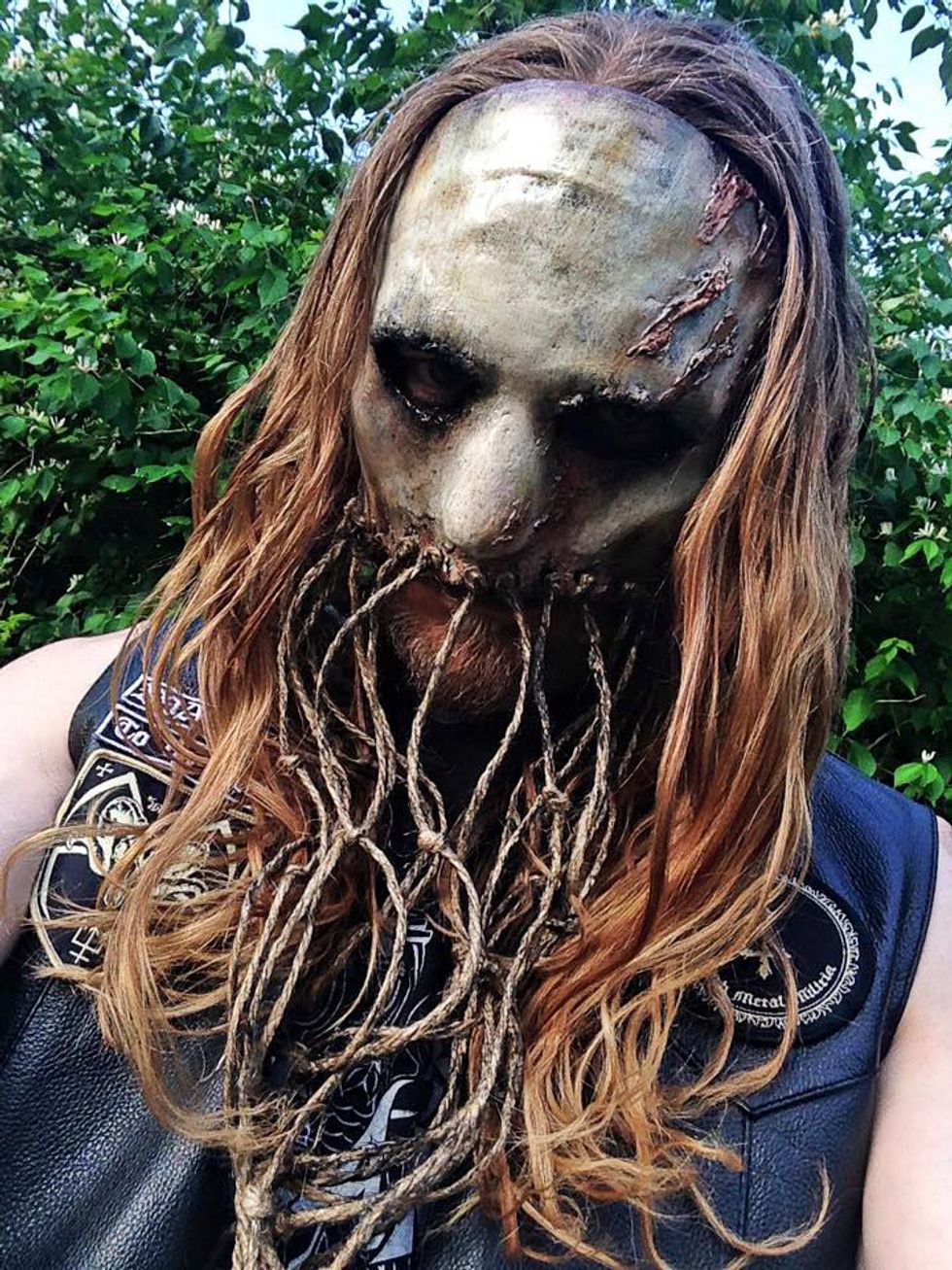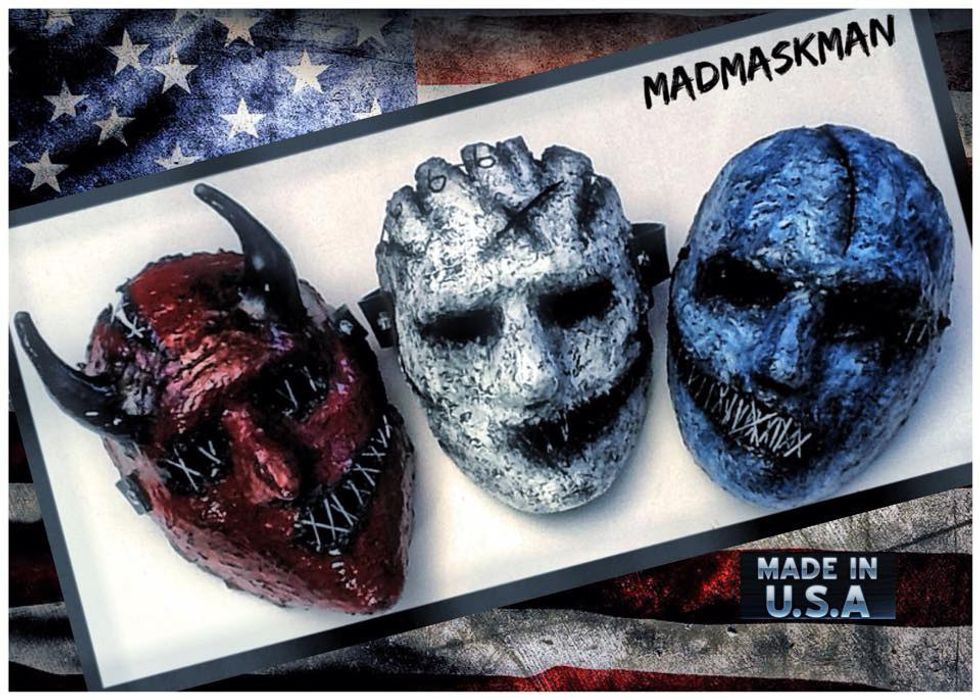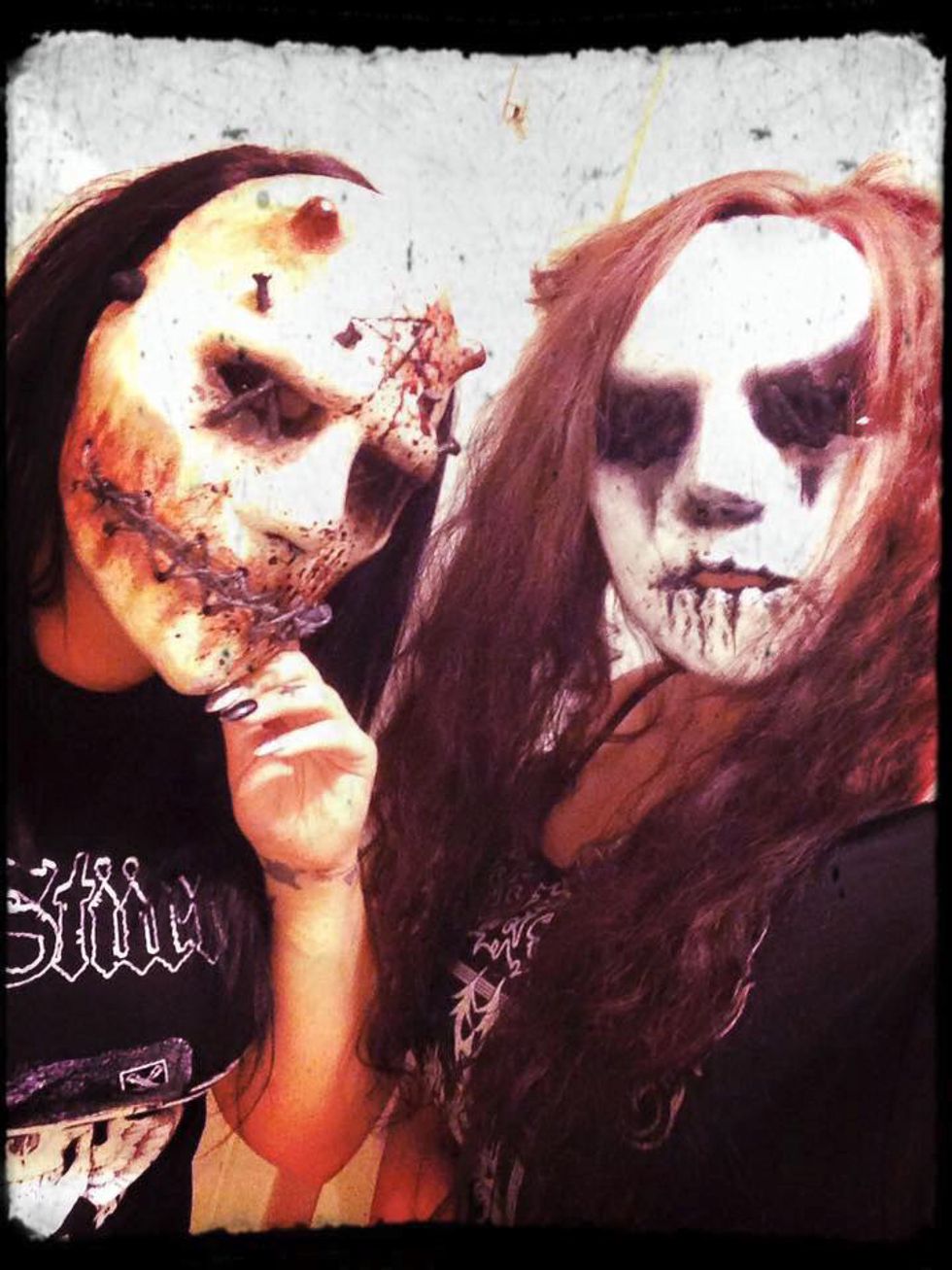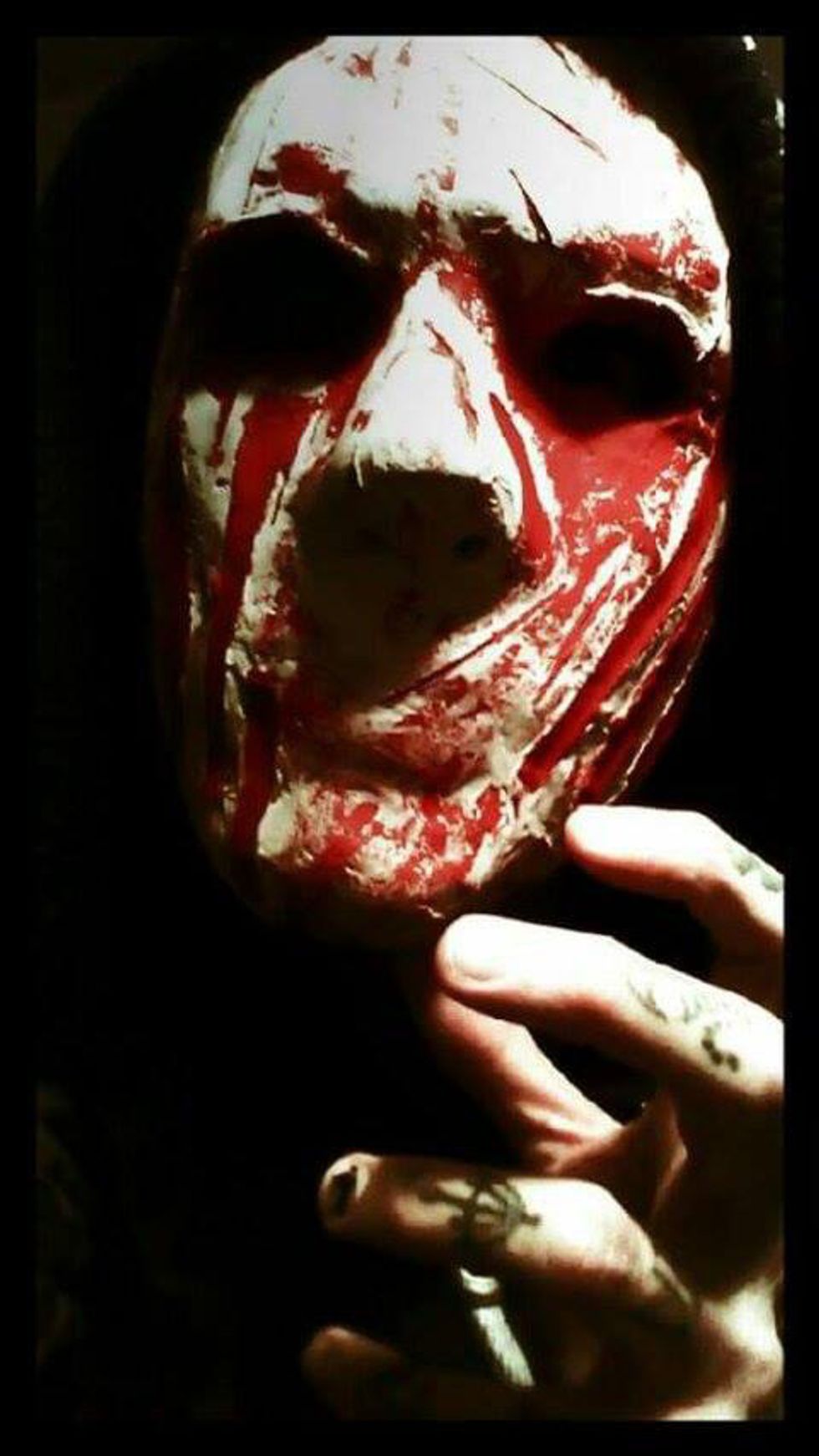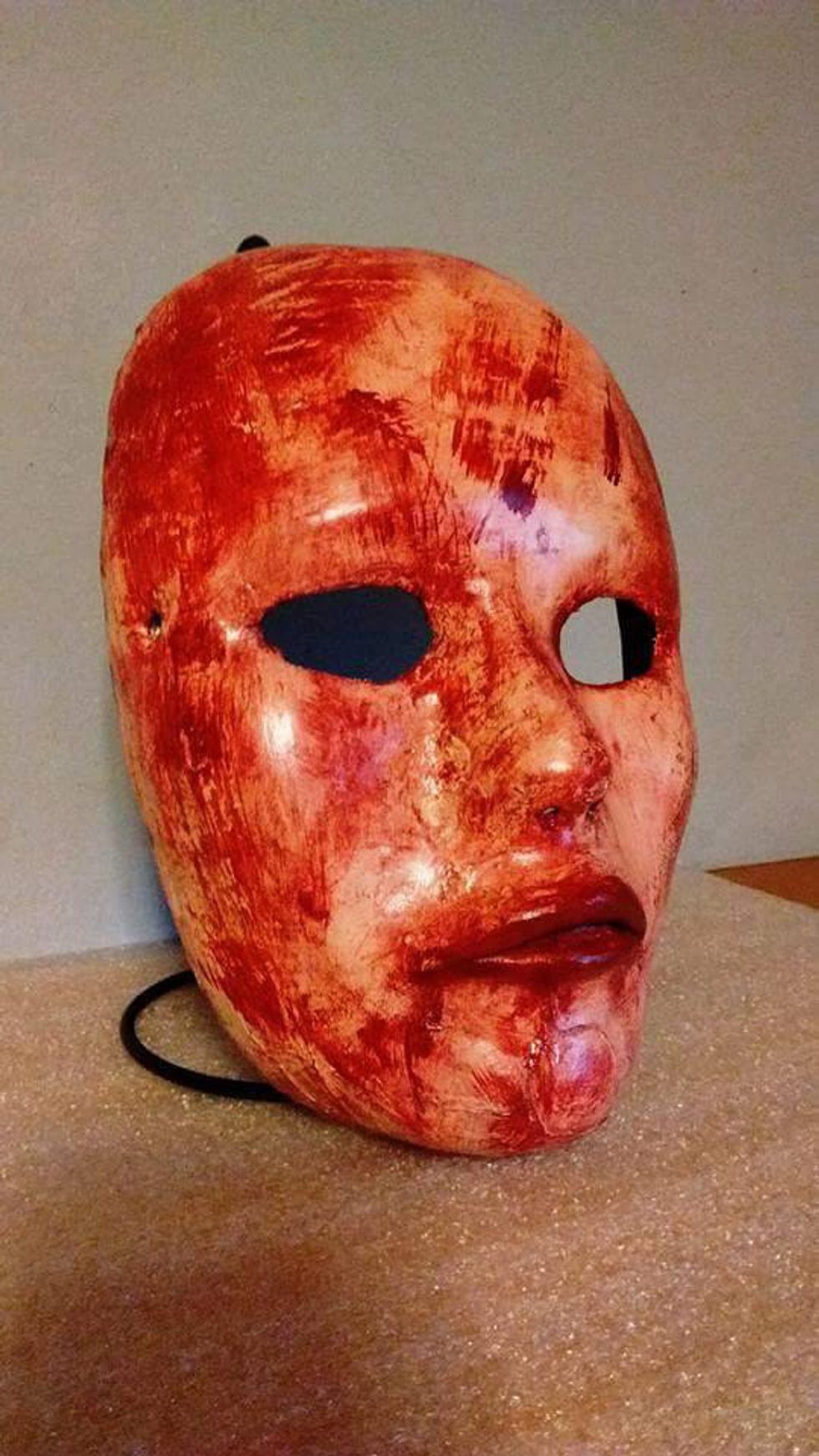“Mask”: What is the first image produced in your mind when you see this word written down or hear it spoken aloud? Perhaps you imagine a Jason Voorhees or Michael Myers figure from a horror movie. Maybe you think about Halloween, anticipating what kind of little, “creatures,” will be ringing your doorbell during trick-or-treat this year. Then again, perhaps you have more sinister visions of criminals synonymous with the term, “masked figure.” Whatever your previous experiences with masks, there are usually only one of two ways to consider them: unconvincingly amusing or downright terrifying.
Most people, I’ve found, have determined that masks are only for Halloween dress-up or for going incognito. They are widely-manufactured accessories, holding little to no value, only to be worn once or twice and tossed aside. However, there are more to masks than hiding one’s face or playing a character; indeed, masks serve other purposes. For centuries, many cultures have applied deep symbolism to masks. They were put to use in ceremonies, modes of entertainment, commemorations after death, and even battles. Masks expressed a society’s values, traditions, and culture, acting as tangible representations of all that was held within its roots. Whether it was the Japanese, mempo (samurai mask) symbolizing the warriors’, “death over defeat,” philosophy or the Greek theater mask that could express comedy or tragedy to an audience, each was created with a specific purpose in mind. These masks, however, were not simply thrown together. Much like with painting or sculpting, creating a mask was a hands-on process intimate to the creator. Today, we often think of masks as mass-produced, made with little to no creative closeness. You’ll be quite surprised to discover that there are mask-makers active today that create true works of contemporary art. They keep traditions of mask-making alive, as well as reintroduce audiences to the artistry of the mask. Not only do they produce masks with the wearers in mind, but they also imbue their creations with personal expression. Their masks become symbolic of what lies within them, as artists. I have the privilege of knowing several of the creative minds behind contemporary masks. These men and women are visionaries of their craft, always coming up with something innovative to share with the mask community (yes, there is one) and the world. I spoke to two modern-day mask-makers personally, asking them several questions about their works and inspirations. From artists Ryan Meyer and Brad Bailey, one learns what makes a mask more than just a disguise...
The Masks of Ryan Meyer:
The Artist
Ryan “Mad Mask Man” Meyer is well-known in the contemporary mask community for his stylized plaster-cast pieces. Based out of the Midwestern United States, he works at his home studio, MadMaskMan, to create his unique, aesthetically-pleasing yet macabre art pieces. Unholy humanoids, creepy clowns, bloody monsters, and eyeless demons are just a few of what you can find in his repertoire of wearable faces. I interviewed him to learn more about his background, and how his mask-making pursuits began:
Meyer: “I started mask-making kind of on a whim...a friend made a mask out of plaster and I wanted to improve on the design so I made one and experimented with different techniques until I found one that gave me the results I wanted, and people seemed to like the outcome. Within a month, I was selling them. That was in December 2012, and I have sold over 600 masks since then.”
Examples of Meyer's various works, demonstrating his expressive nature.
From one desire to improve came a realization, a calling to chase something more unique. The feedback received was enough to influence Meyer’s willingness to keep experimenting with the craft, as well as the techniques, such as plaster molding and casting, painting, and fabricating. Eventually, this spark of inspiration for improvement became a raging artistic fire that continues to burn. I asked him about his inspirations after the inception of his work, as well as about the aesthetics behind his horror-based designs:
“When you think about making a new mask, what inspires you?”
Meyer: “My inspiration comes from everyday life... Art is my way out!”
“Compared to others’ stylized masks, yours are uniquely simple (in an awesome way)—do you think that this bumps up the creepiness, or makes your masks more approachable?”
Meyer: “The simplicity of my designs is just something I prefer over more complex latex or silicon masks. They are also cool but I'm not into them and have no desire to ever work with.”
For the Mad Mask Man, masks become reflections of his every-day experiences. The process offers him an escape, and allows him to share his visions in the form of a new face. Certainly, whether or not the masks he creates are creepier or more approachable due to the masks’ overall sleekness and finish is up to the beholder; nonetheless, they are undoubtedly pieces begging to be worn. Something, either love of the art or longing to transform into one of his creations, influences one to want to wear them. It is equally difficult to not want to trace the surface of one of his masks with your eyes to discover what lies beneath the plaster and paint. In fact, I’d wager that many of Meyer’s customers feel similarly, as he had this to say when I asked him about the feedback he receives:
Meyer: “Feedback is always good... I'm proud to say I have never one time had a complaint after a customer received a mask.”
That’s a great record! Pride in one’s art must be felt in lieu of such a winning streak. Although for Meyer, what’s more rewarding is seeing his fans react to his wearable art:
“What do you feel is the most rewarding aspect of being able to make masks and share your vision with others?”
Meyer: “The best part of masking is to see all the awesome pics of fans and friends in my art. I never was good at art, and gave up on it until I found masks a few years ago and now I can't imagine life without it.”
Fans wear Meyer's pieces of art; he receives many similar photos.
Making masks allowed Meyer to rediscover himself and his artistic talent, and so far, it has been a worthwhile path to take. His masks hold special places in the lives of their wearers, and for many of them, the masks are as special as a painting from a painter or a drawing from an illustrator. Perhaps it is that they feel as though the art becomes a part of them, and that they can use his artwork to further express themselves. Whatever the case, Meyer has certainly created a miniature mask empire from the small project he began just four years ago, one that will hopefully continue to flourish as the years progress.
The Masks of Brad Bailey:
The Artist
Brad “Disastrous” Bailey is another maker of masks who takes great pride in using masks as a form of self-expression. In masks, he finds a comfort instead of a restriction. In his own words: “The masks aren't face plates to me-- they were home.” Bailey also works from his home at Disastrous Splatter Masking in North Carolina, from where he conjures his own grotesque, human-like visages. I also asked him about his origins in the art of masking:
Bailey: “I started messing with masks at a very, very young age, obsessed with Slasher Cinema. Mentors I've had a few through the years with sculpting and patience and trauma. But the night I met Ryan Meyer, it changed me and masks as I knew it: Madmaskman. His have always had something the mask game was missing. His were the first ones that breathed a brutal passion that only a brilliant and dark fed up mind could generate. At the moment, I knew I had found the mentoring that would make me good. But also one that would make me choose to be great.”
Amazingly, Ryan Meyer and Brad Bailey found one another, and Bailey was able to expand upon his experience in mask-making. Demonstrating a strong sense of community in this corner of the art world, the two worked together on masks as mentor and student. Eventually, Bailey developed his own unique style, something that deviates a bit from Meyer’s horror-based masks. Although in his creation process he utilizes similar materials, such as paints and plaster, Bailey adds unique elements to his masks that are characteristic of his yearning to express the pain, violence, and mortality in humanity. I asked him about his inspirations, as well as his materials:
“When you first decided to begin making masks, what did you want to be different about yours?”
Bailey: “The realness; the depth of reality. This sounds awful, but I wanted to always capture my violence. I wanted them to stink of real gore.”
“You use interesting materials, like nails, screws, insects, and even your own blood—what made you decide to incorporate these?”
Bailey: “Because they rust, rot, and decay.”
“Oh, so do you think that adds to your vision of capturing the impermanence of life and realism?”
Bailey: “Very much so, yes.”
Masks such as this one express realistic brutality in human nature.
Bailey’s works are very grounded in the darker sides of the human experience. From his own trials of life, he drew his inspiration for his pieces. Faces of the bloody, the diseased, and the terrorized make up the whole of his work; together, they personify the pain and fears we all have living within us. However, despite his characters’ seemingly miserable states, they are imbued with souls, ones that draw you in and make you want to learn more about them. Similarly to how people are interesting and dynamic, so, too, are Bailey’s artworks. Curious, I questioned him about the masks’ stories:
“Do you give backstories to all of your masks? If so, why?”
Bailey: “Only ones close to me.”
“Do you encourage your customers, then, to create their own stories out of the masks they buy from you?”
Bailey: “I believe a mask has a way a picking its owner. Instead of us picking them, they call out to one in his or her own way. The stories then set off to be told or lived.”
In this way, Bailey’s masks become a living part of the wearer. The masks themselves are representations of horror, pain, disease, or death, but he encourages a fearless future owner to find the mask that calls out to them. When I asked Bailey whether he felt that a mask defines the wearer or the wearer makes the mask, he responded:
“The mask is always in control. The mask makes the person the ghost they want to become. The whole abyss behind these is the vanishing; lay to rest the human, and become the monster.”
Bailey encourages mask-wearing to become an almost interactive experience for the wearer. He wants you to be able to don a mask and become something more than yourself, transcending humanity and embracing its impermanence and darkness. This could be considered therapeutic to some, as often we deal with such fears in a way that covers them up instead of accepting them for what they are, which is a natural part of being human. Despite this outwardly gruesome vision, Bailey only wants the best for his art and his customers:
“What is the most rewarding aspect of being able to make masks and share your creations with everyone?”
Bailey: “To make people happy and to see the faces of my insides. Each one I find a piece of myself in; a piece lost, recovered. My favorite aspect in all of it was that they bring us together as family.”
To Bailey, as well as many other mask-makers, a community thrives off of the art of mask creation and collection. It is a chance to not only express oneself, but also to give others the opportunity to express themselves through a hand-crafted piece of art. Many people are enthralled with Bailey’s understanding of the inner self, and admire his ability to reflect it in his work. He has many customers who praise his innovative creativity. Whether he is creating a manifestation of a human emotion or a replica of something else, there is always a recognizable piece of himself in the work. To own one of his masks is to carry with you a piece of his soul, and perhaps the chance to find one’s own soul within a second skin.
Another demonstration of his unique materials creating something darkly expressive...
So, have I convinced you that masks are more than just Halloween accessories and disguises? If not, there are plenty of other wonderfully-talented, visionary mask-makers working among us that might have something for you! Delving into this small corner of the artistic community might seem strange or off-putting, but there are truly beautiful works of art to behold. There are masks for the horror fan, the cosplayer, the masquerader, and even the animal lover. Some people still practice traditional mask-making, creating replicas of the mempo or theater masks I addressed before. As with any other form of art, you’ll never know what you’ll discover until you open your mind up to a new possibility. Of course, some do not like the idea of wearing masks or are simply afraid of them, which is okay.
However, I do hope that you will take the time to look at masks in a different light. It is a true gift to be able to capture humanity or make a creature from plaster, latex, or a plethora of other materials. What people like Ryan Meyer and Brad Bailey do every day is defy expectations, using their talents to change people’s outlooks on masks. If you are interested in the works of Meyer or Bailey, you are encouraged to visit their Facebook pages, which I have linked at the bottom. If you find yourself wandering in the mask community, you’re sure to come across many other creative individuals with the desire to give you a brand new face, for Halloween or otherwise.
MadMaskMan masks: https://www.facebook.com/MadMaskMan75/
Disastrous Splatter Masking: https://www.facebook.com/DisastrousSplatterMasking/?fref=ts




